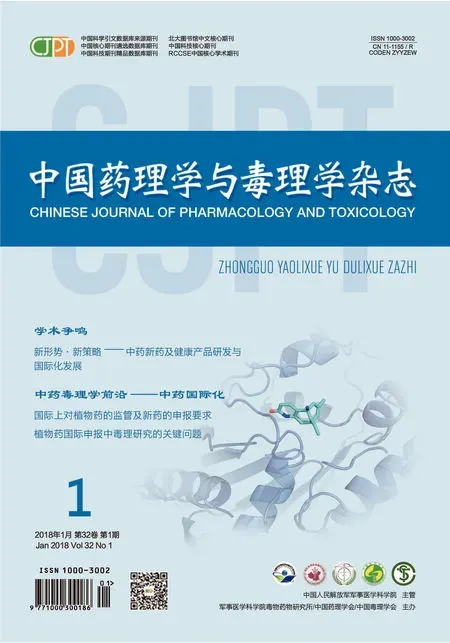Flavonoids in cardiovascular health and diseases
【金仁谦,博士,韩国药理学会理事长,庆北国立大学药学院药理学系教授,庆北国立大学药学院心血管研究所所长;主要研究方向:高血压和心脏代谢综合征发病机制。】
Flavonoids,which are a large,diverse group of bioactive polyphenolic compounds found in plants,are known to confer anti-inflammatory and anti-oxidant benefits.The six main classes of flavo⁃noids(with examples of foods that provide them to adults)are as follows:anthocyanidins(fruits,especially berries),flavan-3-ols(tea),flavanones(citrus fruits and juices),flavones(tea,peppers,and celery),flavonols(tea,onions,and potatoes),and isoflavones(soy products).【黄酮类化合物是从植物中发现的一大类具有多种生物活性的多酚类化合物,具有抗炎和抗氧化的功效。6类主要黄酮类化合物如下:花青素(水果,尤其是浆果)、黄烷醇(茶)、二氢黄酮(柑橘类水果和果汁)、黄酮类(茶、辣椒和芹菜)、黄酮醇(茶、洋葱和土豆)和异黄酮(大豆制品)。】
Recently,it was also revealed that dietary flavonoid intake is inversely associated with cardio⁃vascular disease(CVD)risks as assessed by body mass index(BMI)and waist circumference(WC)among adult(≥20 years)participants in What We Eat in America(WWEIA),National Health and Nutrition Examination Survey(NHANES)2007-2010[1].CVD risks are classified into five categories based on BMI and WC(as in National Heart,Lung,and Blood Institute Guide⁃lines)as follows;average(BMI<25.0),increased(BMI 25.0-29.9,normal WC),high(BMI 25.0-29.9,large WC;BMI 30.0-34.9,normal WC),very high(BMI 30.0-34.9,large WC;BMI 35.0-39.9),and extremely high(BMI≥40.0).Individu⁃als were divided into categories of intake of total flavonoids and each flavonoid class,and adjust⁃ed estimates of the percentages at high+CVD risk were calculated.High+CVD risk classes include high,very high,and extremely high CVD risk categories,but exclude average and increased CVD risk categories.Inverse linear relationships were found between the percentages of adults at high+CVD risk and the intake of total flavonoids,anthocyanidins,flavan-3-ols,and flavanones(P<0.01).For individuals in the highest(versusthe lowest)intake category of anthocyanidins,flavan-3-ols,and flavanones,their relative risk was 0.86,0.88,and 0.89,respectively.【最近“在美国吃什么(WWEIA)”和“美国国家健康与营养调查(NHANES)”2007-2010年的研究以体质量指数(body mass index,BMI)和腰围作为评估指标。结果表明,20岁以上的成年人膳食类黄酮摄入量与心血管疾病风险呈负相关[1]。国家心肺血液研究所指南(NHLBI)根据体质量指数和腰围,将心血管疾病风险分成以下5类:一般风险(BMI<25.0)、发病风险增加(BMI 25.0~29.9,正常腰围)、高风险(BMI 25.0~29.9,大腰围;BMI 30.0~34.9,正常腰围)、很高风险(BMI 30.0~34.9,大腰围;BMI 35.0~39.9)和极高风险(BMI≥40.0)。将个体按照总黄酮类和各类黄酮类的摄入量分类,并计算心血管疾病高风险百分比的调整估计值。心血管疾病高风险等级包括高、很高和极高心血管疾病风险,但不包括一般风险和发病风险增加。有心血管疾病高风险的成年人的百分比与总黄酮、花青素、黄烷醇和二氢黄酮的摄入量呈负线性关系(P<0.01)。花青素、黄烷醇和二氢黄酮摄入量最高个体与最低个体比较,患心血管疾病的相对风险分别是0.86,0.88和0.89。】
Isoflavones have been a subject of intensive researches that have evaluated their possible hypo⁃cholesterolemic effects,antioxidant effects,and estrogen-like effects on blood vessels.Investiga⁃tions in regards to animals and in humans have suggested that dietary soy protein containing isofla⁃vones can reduce blood pressure,improve lipid profiles,and restore vascular function.The 3 major isoflavones found in soybeans are genistein(4′,5,7-trihydroxyisoflavone),daidzein(4′,7-dihydroxyi⁃soflavone),and glycitein (6-methoxydaidzein).Soy protein containing isoflavones has been observed to have several beneficial effects on cardiovascular health;a meta-analysis study showed that total cholesterol decreased by 9.3%,triglyc⁃erides by 10.5%and low-density lipoprotein choles⁃terol by 12.9%,when an average of 47 g of soy protein was consumed daily.Soybean isofla⁃vones were believed to inhibit proliferation of vascular smooth muscle and thus contribute to the prevention of atherosclerotic cardiovascular diseases.【异黄酮是重点研究对象,已经评价了其可能的降胆固醇、抗氧化和对血管的雌激素样作用。动物和人类研究均表明,食用含有异黄酮的大豆蛋白可以降低血压、改善血脂和恢复血管功能。大豆中发现的3类主要异黄酮是染料木黄酮(4‘,5,7-三羟基异黄酮)、大豆苷元(4’,7-二羟基异黄酮)和大豆黄素(6-甲基大豆黄素)。含有异黄酮的大豆蛋白对心血管健康有益。一项荟萃分析显示,如果每天平均摄入47 g大豆蛋白,总胆固醇可降低9.3%、甘油三酯降低10.5%、低密度脂蛋白降低12.9%。大豆异黄酮预防动脉粥样硬化性心血管疾病与其抑制血管平滑肌增殖有关。】
A number of flavonoids have been reported to modulate vascular relaxation.Flavonoids usually induce endothelium-dependent vasorelaxation,while some of them also exert endothelium-inde⁃pendent vasorelaxation.We elucidated a molecular mechanism by which isoflavone attenuates vascular contraction.Genistein and daidzein prevented agonist-induced vascular contraction by inhibiting RhoA/Rho-kinase signaling pathway[2].Rat aortic rings were denuded of endothelium,mounted in organ baths,and contracted with 9,11-dideoxy-11α,9α-epoxymethanoprostaglandin F2α (U46619),a thromboxane A2 analogue or KCl 30 min after the pretreatment with genistein,daidzein or vehicle.We determined the phosphorylation level of the myosin light chain(MLC20),myosin phospha⁃tase targeting subunit 1(MYPT1)and protein kinase C(PKC)-potentiated inhibitory protein for hetero⁃trimeric myosin light chain phosphatase of 17 ku(CPI17)by means of Western blot.We also mea⁃sured the amount of GTP RhoA as a marker regarding RhoA activation.The cumulative addi⁃tions of U46619 or KCl increased vascular tension in a concentration-dependent manner,which was inhibited by pretreatment with genistein or daidzein.Both U46619(30 nmol·L-1)and KCl(50 mmol·L-1)increased MLC20 phosphorylation levels which were inhibited by genistein as well as daidzein.Furthermore,both genistein and daidzein decreased the amount of GTP RhoA activated by either U46619 or KCl.U46619(30 nmol·L-1)increased phosphorylation of the MYPT1Thr855 and CPI17Thr38,which was also inhibited by genistein or daidzein.However,neither genistein nor daidzein inhibited PDBu-induced vascular contraction and CPI17 phosphorylation.In conclu⁃sion,isoflavone attenuates vascular contraction through inhibition of the RhoA/Rho-kinase signaling pathway.【据报道,许多黄酮类化合物可以调节血管舒张,通常引起内皮依赖性血管舒张,而有些也有非内皮依赖性血管舒张作用。我们阐明了异黄酮减弱血管收缩的分子机制。染料木黄酮和大豆苷元可通过抑制RhoA/Rho激酶信号通路阻止激动剂诱导的血管收缩[2]。两者预处理30 min后,去除大鼠主动脉环内皮,放在器官浴中,用血栓素A2类似物(9,11-双脱氧-11α,9α-环氧甲醇前列腺素F2α,U46619)或氯化钾诱导主动脉环收缩。我们用Western蛋白印迹法检测了肌球蛋白轻链(MLC20)的磷酸化水平,肌球蛋白磷酸酶靶向亚单位1(MYPT1)和磷酸化依赖的肌球蛋白轻链磷酸酶抑制蛋白-蛋白激酶C加强的磷酸酶抑制剂17(CPI17),还检测了RhoA激活的标志-GTP RhoA的含量。增加U46619或氯化钾可浓度依赖性增加血管张力,而染料木黄酮或大豆苷元预处理可以抑制此效应。染料木黄酮和大豆苷元均能抑制U46619(30 nmol·L-1)和氯化钾(50 mmol·L-1)引起的MLC20磷酸化水平增加,而且均可降低由U46619或氯化钾激活的GTP RhoA含量。U46619(30 nmol·L-1)增加了 MYPT1Thr855 和CPI17Thr38的磷酸化,染料木黄酮和大豆苷元可抑制此效应。然而,无论染料木黄酮还是大豆苷元都不能抑制PDBu诱导的血管收缩和CPI17磷酸化。总之,异黄酮通过抑制RhoA/Rho激酶信号通路减弱血管收缩。】
3’,4’-Dihydroxyflavonol(DiOHF)is a synthetic flavonol with optimized antioxidant properties relative to naturally-occurring flavonols according to struc⁃ture-activity relationship studies.DiOHF enhances nitric oxide bioavailability through an antioxidant effect and improves vascular function after isch⁃emia and reperfusion injury or in diabetes in rats.Moreover, DiOHF administered during isch⁃emia,but shortly before reperfusion,significantly reduced the infarct size and reperfusion injury in anesthetized sheep and goats.In addition,DiOHF causes vascular relaxation of both endotheliumintact and-denuded rat aortas.Compared with a range of natural flavonols,flavones and synthetic flavonols,DiOHF is the most potent vasorelaxant flavonol.DiOHF and flavone decrease vascular contraction through inhibition of the RhoA/Rhokinase pathway in endothelium-denuded rat aorta[3-4]as well as Ca2+desensitization in permeabilized rat mesenteric artery[5]。【3’,4’-二羟基黄酮醇(DiOHF)是合成的黄酮醇。结构-活性关系研究表明,与天然黄酮醇比较,其具有优化的抗氧化性质。DiOHF通过抗氧化作用提高了一氧化氮的生物利用度,改善缺血后血管功能和再灌注损伤或大鼠的糖尿病。而且,在缺血期间再灌注之前不久,给予DiOHF能显著减少麻醉绵羊和山羊的梗死面积和再灌注损伤。此外,DiOHF会导致大鼠内皮完整和去内皮主动脉血管舒张。与许多天然黄酮醇、黄酮和合成黄酮醇比较,DiOHF是最强效的血管舒张黄酮醇。DiOHF和黄酮通过抑制大鼠去内皮主动脉[3-4]的RhoA/Rho激酶途径以及大鼠透化的肠系膜动脉中的钙失敏来减轻血管收缩[5]。】
Thioflavones(2-phenyl-4H-1-benzothiopyran-4-ones)are thio analogues of flavones in which a sulfur atom is substituted for an oxygen atom and can be synthesized from thiosalicylic acid in diverse ways.They have drawn considerable atten⁃tion because of their profound pharmacological activities such as antimalarial,antibacterial,and antitumor effects as well as inhibitory effect of steroid sulfatase.3′,4′-Dimethoxythioflavone induces endothelium-dependent vasorelaxation through activation of epidermal growth factor receptor[6].【硫代黄酮(2-苯基-4H-1-苯并噻喃)是含硫的黄酮类似物,黄酮的硫原子被氧原子取代,可以以不同的方式由硫代水杨酸合成。由于其具有抗疟、抑菌、抗肿瘤及抑制甾体硫酸酯酶等药理作用,引起了广泛关注。3′,4′-二甲氧基硫代黄酮通过激活表皮生长因子受体,诱导内皮依赖性血管舒张[6]。】
[1]Sebastian RS,Wilkinson Enns C,Goldman JD,Moshfegh AJ.Dietary flavonoid intake is inversely associated with cardiovascular disease risk as assessed by body mass index and waist circumference among adults in the United States[J/OL].Nutrients,2017,9(8):827(2017-08-02).https://www.ncbi.nlm.nih.gov/pmc/articles/PMC5579620/
[2] Seok YM,Baek I,Kim YH,Jeong YS,Lee IJ,Shin DH,et al.Isoflavone attenuates vascular contraction through inhibition of the RhoA/Rhokinase signaling pathway[J].J Pharmacol Exp Ther,2008,326(3):991-998.
[3] Song MJ,Baek I,Seo M,Kim SH,Suk K,Wood OL,et al.Effects of 3′,4′-dihydroxyflavonol on vascular contraction of rat aortic rings[J].Clin Exp Pharmacol Physiol,2010,37(8):803-810.
[4]Baek I,Jeon SB,Song MJ,Yang E,Sohn UD,Kim IK.Flavone attenuates vascular contractions by inhibiting RhoA/Rho kinase pathway[J].Korean J Physiol Pharmacol.2009,13(3):201-207.
[5] Kim HY,Seok YM,Woodman OL,Williams SJ,Kim IK.3′,4′-Dihydroxyflavonol reduces vascular contraction through Ca2+desensitization in perme⁃abilized rat mesenteric artery[J].Naunyn Schmie⁃debergs Arch Pharmacol,2012,385(2):191-202.
[6]Jang EJ,Seok YM,Lee JI,Cho HM,Sohn UD,Kim IK.3′,4′-Dimethoxythioflavone induces endo⁃thelium-dependent vasorelaxation through activation of epidermal growth factor receptor[J].Naunyn Schmiedebergs Arch Pharmacol,2013,386(3):339-350.

